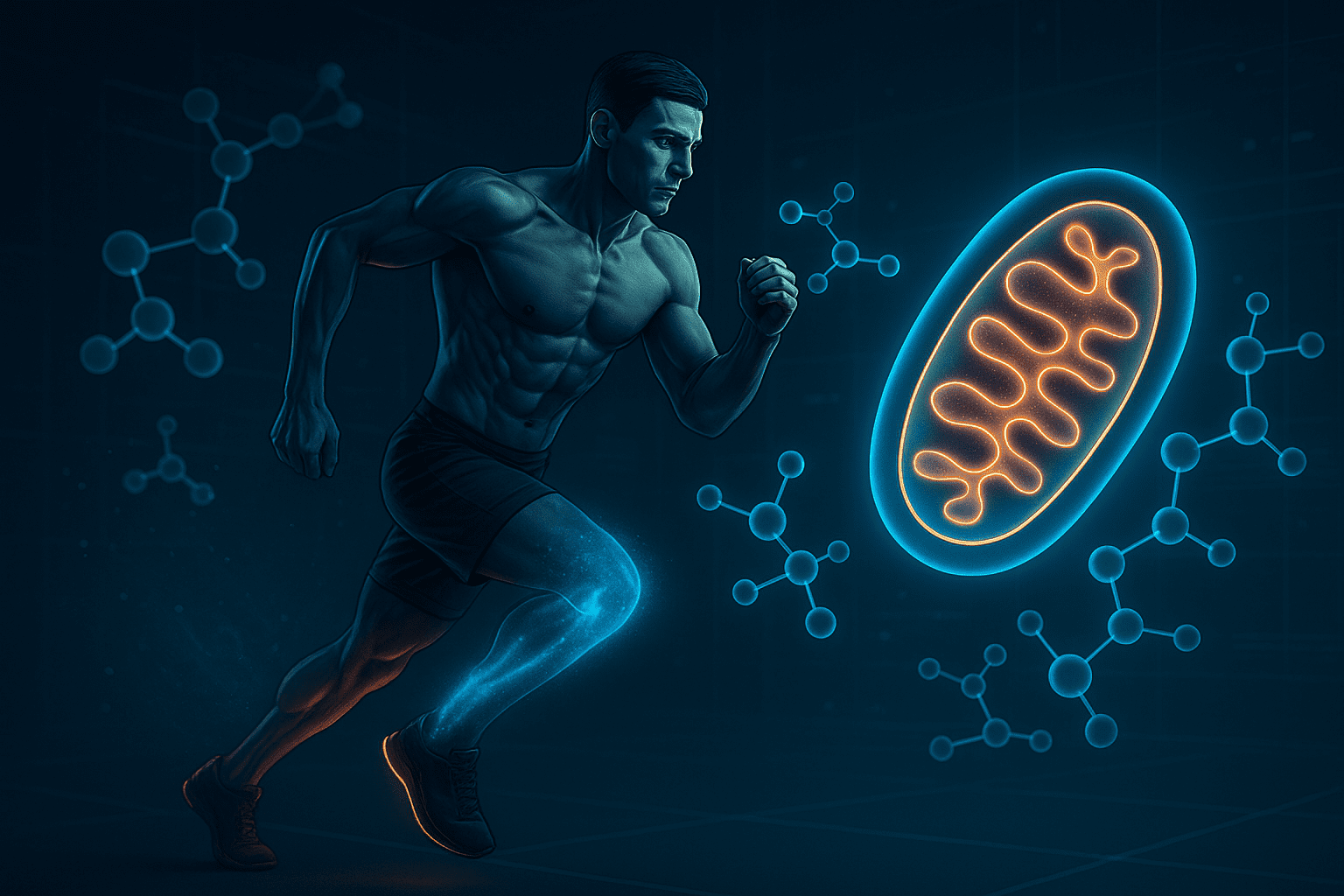Runners are shocked to learn a truth: your legs don’t fail from fatigue alone, your cells also do. Emerging peptide research may help them recover faster than they actually imagine. Hard training, long distances, and daily runs can cause soreness, tightness, and slow recovery.
Many runners want faster recovery and more stamina. They want to feel light and strong on the track. This is why peptides are becoming a popular topic in the fitness world. Peptides are small chains of amino acids. They act like messengers inside the body. Some peptides are being researched for their role in healing, energy, and performance. Runners are now curious about how these tiny molecules might support their training.
Note:
This article is for educational purposes only. The peptides mentioned here are research chemicals and not approved for human use. This information should not replace medical advice, diagnosis, or treatment. Always talk to a qualified healthcare professional before making any health decisions.
Part 1. How Peptides May Help Runners
When you run, your body needs to heal damaged tissues, repair muscles, and reduce inflammation. Your energy system also needs support so you can run longer without feeling drained.
Research on peptides suggests that certain compounds may help with:
- Tissue repair
- Faster recovery after hard sessions
- Reduced inflammation and soreness
- Better stamina and energy use
- Improved muscle function and performance
PeptideMania and NuScience Peptides already offer detailed guides on many of these peptides.
Here are the three peptides most commonly discussed for running, performance, and post-training recovery.
BPC-157: Support for Tendons and Ligaments
BPC-157 is one of the most popular peptides in sports recovery research. It is known as the “Body Protection Compound.” Runners often deal with knee pain, shin tightness, ankle stress, and foot discomfort. These issues usually come from overuse of tendons and ligaments. Studies suggest it may support:
- Tendon repair
- Ligament healing
- Joint comfort
- Muscle recovery
- Protection of tissues under stress
NuScience Peptides provides BPC-157 and BPC-157/TB-500 blends for laboratory research. Many articles on PeptideMania explain how this peptide is studied in the context of recovery.
TB-500: Support for Muscle Recovery and Flexibility
TB-500 (Thymosin Beta-4) is another well-known research peptide. For runners, TB-500 may be interesting because running produces micro-tears in muscles. Tight hamstrings, stiff calves, and sore quads are common in runners. TB-500 is researched for its possible role in healing and mobility. It is often studied for:
- Faster muscle repair
- Reduced inflammation
- Soft-tissue healing
- Improved flexibility
People in the research community are also interested in how TB-500 might work when studied alongside BPC-157, especially for recovery-focused protocols. NuScience Peptides offers TB-500 and BPC-157/TB-500 blends for research use only.
MOTS-c: Support for Energy and Stamina
MOTS-c is a mitochondrial peptide. Mitochondria are the “power plants” of your cells. They turn food into energy. For runners, MOTS-c is especially interesting because long runs require stable energy. Better mitochondrial function may help improve stamina and reduce fatigue. This peptide is being studied for:
- Energy production
- Endurance
- Metabolic support
- Fat-burning efficiency
- Exercise performance
PeptideMania has a full guide on MOTS-c. NuScience Peptides also lists MOTS-c as a high-purity research peptide.
Part 2. How Runners Can Think About Peptides
Peptides are not magic fixes. They are research tools being studied in labs and with limited human data. Training, recovery, and lifestyle always come first.
Runners often explore peptides in three ways:
- Injury Recovery Support\
Some runners read about peptides like BPC-157 and TB-500 when they want to understand how tendons, ligaments, and muscles heal. This interest usually comes after repeated strains, sprains, or long-term joint pain.
- Daily Training Recovery
Other runners look at peptides in the context of regular training stress. They want to know how the body repairs itself between runs and how inflammation is managed. They use this knowledge to respect rest days, improve sleep, and support recovery with better habits.
- Stamina and Energy Support
Some runners focus more on energy, metabolism, and endurance. They study peptides like MOTS-c to learn how mitochondria work and how the body uses fuel over long distances. This can help them think more clearly about pacing, nutrition, and long-term performance.
Good training still matters more than anything. Rest, stretching, hydration, sleep, shoes, and nutrition are the foundation. Peptides are only an academic topic that some athletes choose to study for extra knowledge.
Part 3. Safety and Legal Notes
This part is very important for every reader. Peptides are not like normal supplements you buy at a local store. The rules and safety data are different, and they can change over time.
Peptides like BPC-157, TB-500, and MOTS-c are sold for research use only in the USA. They are not approved by the FDA for medical or human use. Human studies are limited, and long-term effects are not fully known. Laws and regulations may also vary from country to country.
For these reasons:
- Do not treat peptides as simple wellness products.
- Do not self-diagnose or self-treat health problems.
- Always consult a medical professional for any health questions or treatment decisions.
This article does not give medical, legal, or financial advice. It only shares educational information based on current research discussions.
Final Thoughts
Running is rewarding, but it is also demanding. Many runners are now exploring peptides as a topic of interest for recovery, stamina, and healing. Peptides like BPC-157, TB-500, and MOTS-c are widely studied for their roles in tissue repair and energy production.
For research-grade peptide products, you can visit NuScience Peptides, which offers high-purity compounds for laboratory use.





